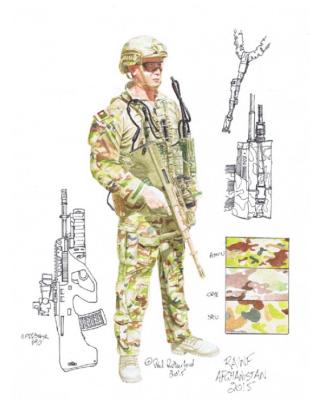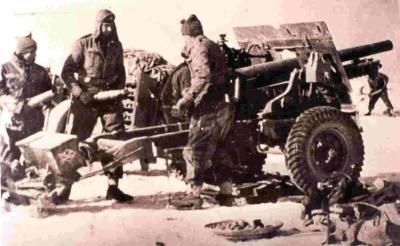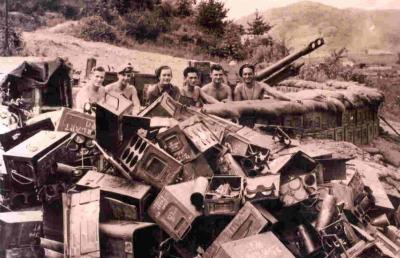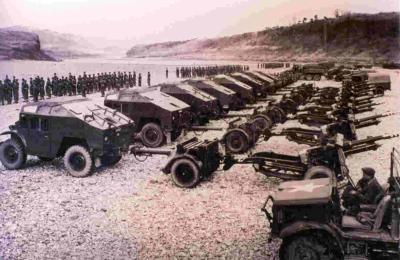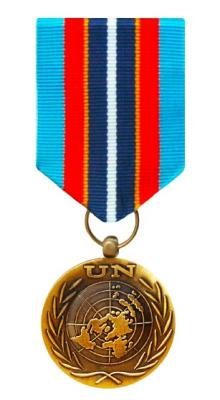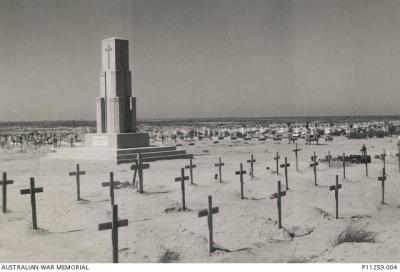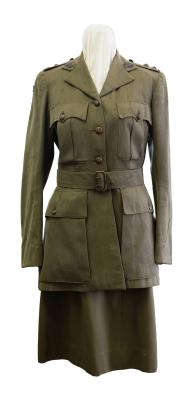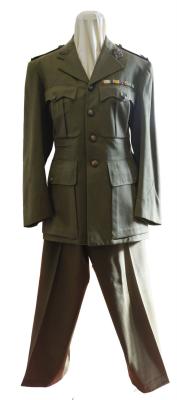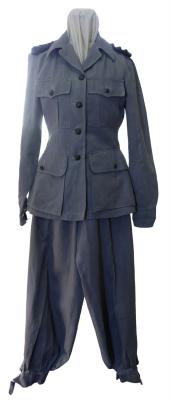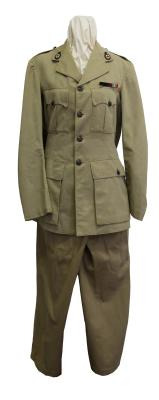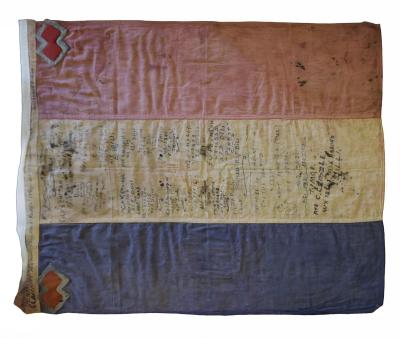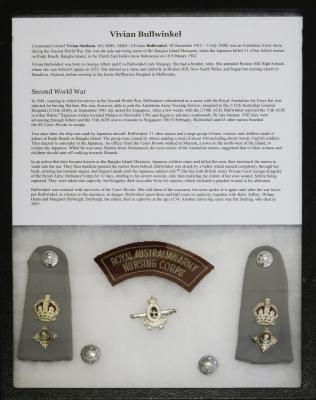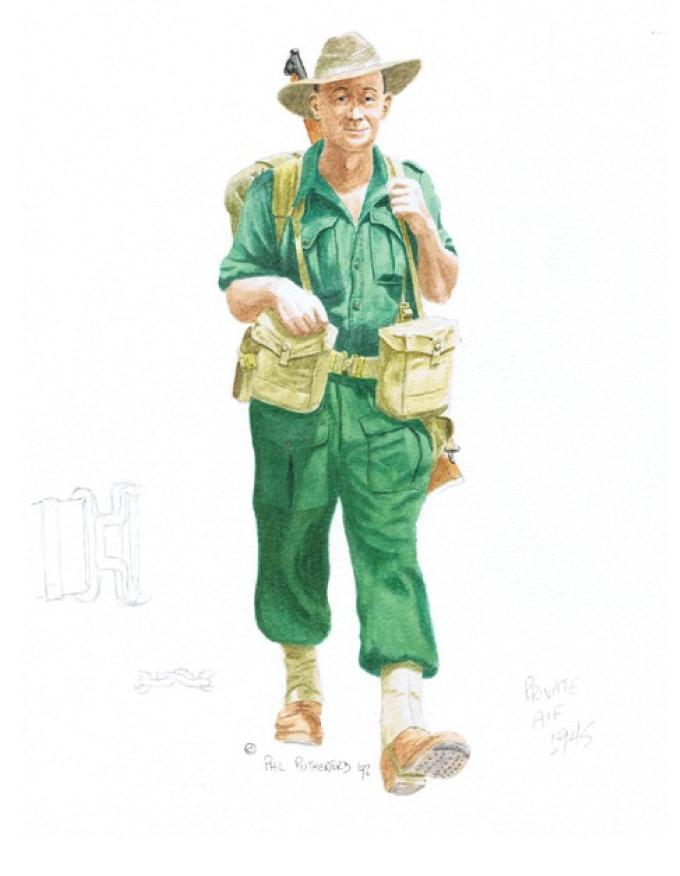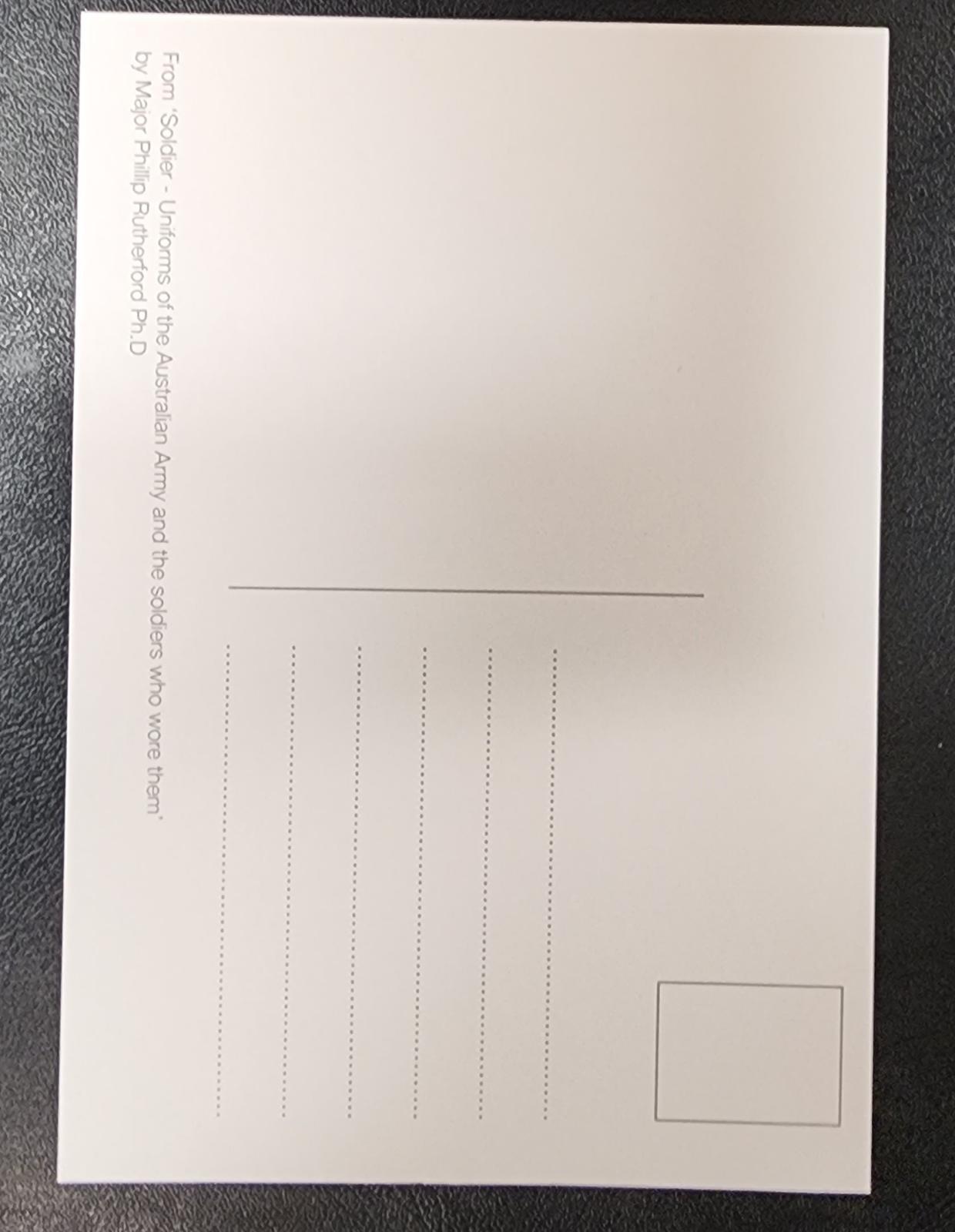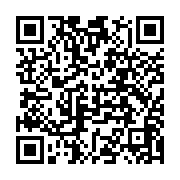World War 2, South West Pacific Theatre, 1945
Postcard depicting the general form of the approved military clothing worn by Australians near the end of the Pacific campaign in 1945
The soldier in this illustration appears to be wearing a brand new uniform of a
colour that reflects the quality of dye used in a particular batch rather than the
desire for a uniform shade of green. Throughout the war there was an oversupply
of khaki drill shirts and trousers, and while these were worn during the opening
weeks of the operations in New Guinea, the sharp contrast of the khaki drill
uniforms against the deep green jungle put many patrols at a disadvantage. This
lesson was quickly learned and troops following the initial deployments made
many attempts to dye their uniforms. The shortage of dye proved problematic
and a wide variety of colours characterised the uniforms of most soldiers, even
those from the same unit. By the end of the war uniforms were being
manufactured from ‘jungle green’ material and the issue of consistency was
resolved.
The soldier’s webbing is the 1937 pattern web equipment known as the
Australian jungle kit, issued from late 1943 to troops fighting in New Guinea
and the islands. This equipment differed somewhat from that worn by soldiers in
the Middle East in that the basic pouches were larger and brass hooks were
attached to the water bottle carrier to conform to the new regulation that all
webbing and equipment would be fastened above the waistline.
While the reason for this is unknown, intuitively it was most likely so that
anything carried or worn lower than the belt line (such as water bottles,
in/entrenching tools and haversacks) would not catch on vines and branches in
thick jungle or swing back and forth which, in tropical climates, soon caused
rashes and abrasions that quickly festered without proper medical attention.
These were the lessons learnt by troops in the later Malayan campaign and the
Vietnam War and would have been just as important in World War 2
Details
Details
With permission from "Soldier - Uniforms of the Australian Army and the soldiers who wore them" by Major Philip Rutherford
Australian Army Museum of Western Australia
Australian Army Museum of Western Australia
Other items from Australian Army Museum of Western Australia
- Post 1945, Central Asia, Afghanistan, 2010
- Post 1945, North East Asia, Korea, 16 New Zealand Field Regiment, 1951
- Post 1945, North East Asia, Korea, 16 New Zealand Field Regiment, 1951
- North East Asia, Korea, Imjin River. 16 New Zealand Field Regiment, Armistice Parade, 1953
- Medal, Post 1945, Peacekeeping, United Nations Advance Mission in Cambodia (UNAMIC), 1991-92
- World War 2, North Africa, Libya, Tobruk, Memorial, 1941
- World War 2, Western Australia, WF49547 BEATON, Australian Women's Army Service, 1945
- World War 2, Western Australia, W30209 NEWMAN, 5 Garrison Battalion, 1945
- World War 2, Western Australia, WX3480 STEPHENSON, 2/9 Australian General Hospital, 1945
- World War 2, Western Australia, MORRISON, Red Cross Field Force, 1945
- World war 2, South West Pacific, Timor l'este, Dili, 2/2 Commando, 1942
- World War 2, South West Pacific, Vyner Brooke, BULLWINKEL
